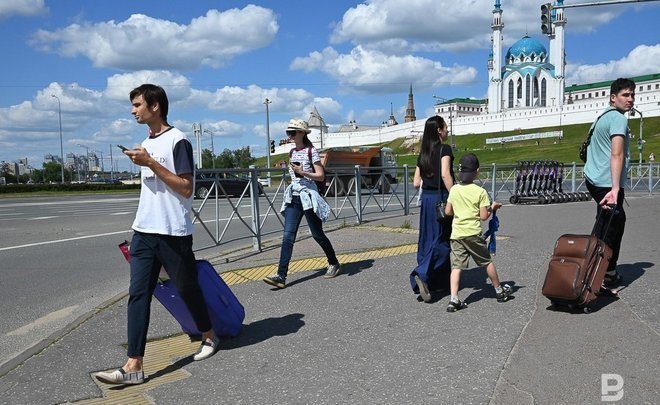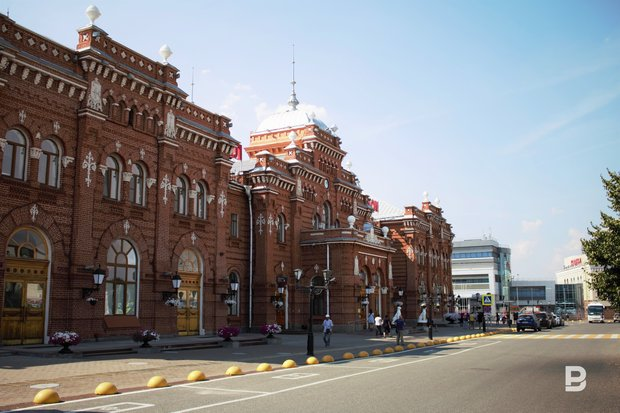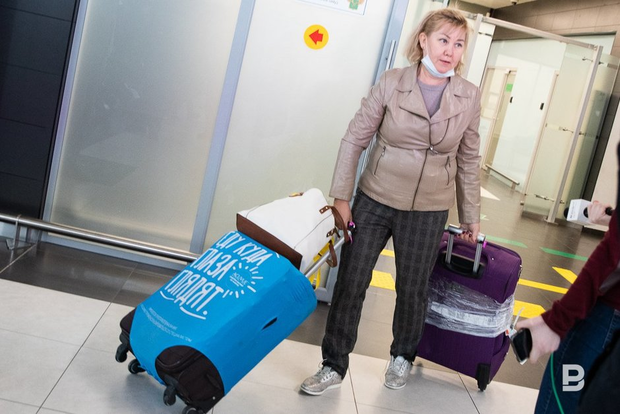Tatarstan is the only Volga region with migration growth in first six months

People from other Russian regions rush to Tatarstan
Migration growth — 3,778 people — were registered in Tatarstan during the first half of 2022. It is nearly 10% more than during the same period last year — then the number was 3,440 people.
Most migrants come from other Russian regions — 2,315 people, or 61,3% of migration growth, reads data of the Russian Statistics Service. To compare, in the first half of 2021, they accounted for less than half — 46%, or 1,584 people.

International migration during the first half of 2022 was equal to 38,7%, or 1,463 people. The majority — 1,376 citizens — arrived in Tatarstan from CIS countries. The rest — 87 — did from other foreign states. Here the ratio almost didn’t change. In January-June 2021, 1,723 people from CIS countries arrived in the republic, 133 did from other countries.
Migration decline registered in 13 out of 14 Volga regions
Among 14 regions in the Volga Federal District, the republic is the only where migration growth was registered in the first six months of 2022. Moreover, during the same period last year, it was registered in five regions: besides Tatarstan in Samara Oblast (+1 897), Nizhny Novgorod Oblast (+901), Bashkiria (+330) and Udmurtia (+8).
In January-June 2022, migration decline in the Volga region was 23,563 people. Compared to the same period last year, it almost quadrupled — then it was 6,230 people.

The biggest migration decline was Saratov Oblast — 5,113. The lowest number was registered in Kirov Oblast — 201 people.
Realnoe Vremya publishes a rating of regions of the Volga Federal District in migration decline:
- Saratov Oblast — 5 113 people;
- Nizhny Novgorod Oblast — 3 723 people;
- Perm Krai — 3 005 people;
- Mordovia — 2 979 people;
- Samara Oblast — 2 447 people;
- Chuvashia — 2 345 people;
- Bashkiria — 2 209 people;
- Penza Oblast — 1 941 people;
- Mari El — 1 647 people;
- Orenburg Oblast — 1 073 people;
- Ulyanovsk Oblast — 450 people;
- Udmurtia — 209 people;
- Kirov Oblast — 201 people.
Migration decline in Russia nearly reaches 97,000
Migration decline was registered across Russia in general. In the first half of 2022, it was 96,737 people — 1,937,098 citizens left the country, 1,876,352 arrived. Moreover, last January-July, a growth equal to 114,215 was registered in the country, reads the Statistic Service’s data.
Moreover, migration rise was registered despite such statistics — 8,915 people. It is North-West Federal District with Karelia, Komi, Arkhangelsk, Vologda, Kaliningrad, Leningrad, Murmansk, Veliky Novgorod and Pskov oblasts, Saint Petersburg and the Nenets Autonomous District.

In other federal district migration decline was fixed in the first six months of 2022. The Siberian Federal District was the anti-leader — 26,067 people, Far Eastern Federal District is second — 25,012, the Volga Federal District is third.
Tatarstan is one of the leaders in attracting foreign labour migrants to the economy
By the way, Tatarstan is one of the leaders among Russian regions in number of foreign labour migrants employed in the economy — 1,%, the Statistics Service says. The same indicator is in the Khanti-Mansi Autonomous District. The republic shares ninth line with it.
Moscow — 26,3% — became the leader. Moscow Oblast is second — 14,3%, Saint Petersburg is third (11,8%). With a significant gap, they are followed by Leningrad Oblast (3,6%), Krasnodar Krai (2,7%), Sverdlovsk Oblast (2,7%), Novosibirsk (1,9%) Irkutsk oblasts (1,85).

The number of foreigners who had valid work permit in Russia totalled 63,400 people by the end of the first half. 13,000 foreigners of this number obtained work permit in April-June.
Among 63,400 people who arrived in Russia to work, 16,800 are citizens of CIS countries. Almost half of them — 6,900 — came from Uzbekistan. Another 3,900 did to work from Tajikistan, 1,500 — from Azerbaijan, 1,400 — from Armenia, 1,100 from Kyrgyzstan and Ukraine. Migrants from China amounted to 20,200, from Vietnam — 11,600, from Turkey — 4,500.
Most men arrived in Russia to earn money. The majority is aged 18-29, female labour migrants are from 30 to 39 years.